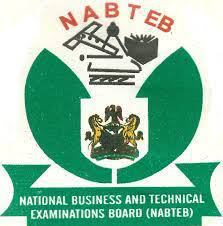2024 JAMB Mathematics Syllabus (Maths) Questions & Answers
2024 Jamb Mathematics syllabus for Jamb Mathematics, The aim of the Unified Tertiary Matriculation Examination (UTME) syllabus in Mathematics is to prepare the candidates for the Board’s examination. It is designed to test the achievement of the course objectives, which are to:

2024 Jamb Mathematics syllabus for Jamb Mathematics
Candidates should be able to:
calculate the range, mean deviation, variance and standard deviation of ungrouped and group data.
Candidates should be able to:
solve simple problems involving permutation and combination.
Candidates should be able to:
solve simple problems in probability (including addition and multiplication).
Adelodun A. A (2000). Distinction in Mathematics: Comprehensive Revision Text, (3rd Edition)
Ado -Ekiti: FNPL.
Anyebe, J. A. B (1998). Basic Mathematics for Senior Secondary Schools and Remedial Students in Higher/ institutions, Lagos: Kenny Moore.
Channon, J. B. Smith, A. M (2001). New General Mathematics for West Africa SSS 1 to 3, Lagos: Longman.
David -Osuagwu, M. name(s)? (2000). New School Mathematics for Senior Secondary Schools,
Onitsha: Africana – FIRST Publishers.
Egbe. E name(s)? (2000). Further Mathematics, Onitsha: Africana – FIRST Publishers
Ibude, S. O. name(s)? (2003). Agebra and Calculus for Schools and Colleges: LINCEL Publishers.
Tuttuh – Adegun M. R. name(s)? (1997). Further Mathematics Project Books 1 to 3, Ibadan: NPS Educational
That is all on
2024 Jamb Mathematics syllabus for Jamb Mathematics, feel free to ask Questions concerning the 2024 Jamb Mathematics syllabus for Jamb Mathematics using the comments section below.
Posted by Examquestion on July 26, 2018.
Tags: (Maths), 2019/2020, 2024 jamb mathematics questions and answers, 2024 jamb mathematics questions and answers pdf, 2024 jamb mathematics questions pdf, 2024 jamb mathematics questions pdf download, 2024 jamb maths questions and answers, 2024 jamb maths questions and answers pdf, 2024 jamb maths questions pdf, 2024 jamb maths questions pdf download, 2024 jamb questions and answers, 2024 jamb utme mathematics questions and answers, 2024 jamb utme mathematics questions and answers pdf, 2024 jamb utme mathematics questions pdf, 2024 jamb utme mathematics questions pdf download, 2024 jamb utme mathematics questions pdf free download, 2024 jamb utme maths questions and answers, 2024 jamb utme maths questions and answers pdf, 2024 jamb utme maths questions pdf, 2024 jamb utme maths questions pdf download, and, ANSWERS, CBT, Does JAMB repeat questions yearly?, How many marks is maths in JAMB?, How many questions are in JAMB Mathematics, How to pass maths in JAMB?, Is JAMB math hard?, Jamb, JAMB CBT 2024, JAMB Mathematics past questions and answers PDF, JAMB Mathematics PDF, JAMB Mathematics questions and answers, jamb mathematics questions and answers for 2023/2024, JAMB mathematics questions and answers PDF, JAMB Mathematics syllabus, Jamb maths past Question, JAMB most repeated questions in Mathematics, JAMB Past Questions and answers PDF 2024, JAMB Physics and Mathematics questions, JAMB Questions 2024, JAMB Questions and Answers 2024, JAMB secret questions and answers, Jamb utme mathematics questions 2021, Jamb utme mathematics questions and answers, Jamb utme mathematics questions and answers 2021, Jamb utme mathematics questions and answers pdf, Jamb utme mathematics questions pdf, Jamb utme maths questions 2021, Jamb utme maths questions and answers, Jamb utme maths questions and answers 2021, Jamb utme maths questions and answers pdf, Jamb utme maths questions pdf, Math jamb past questions PDF, Mathematics, Mathematics JAMB past questions PDF download, Mathematics questions and answers PDF Download, Maths jamb question, Post UTME maths questions, QUESTIONS, Syllabus
Categories: Jamb Syllabus | Past Questions




